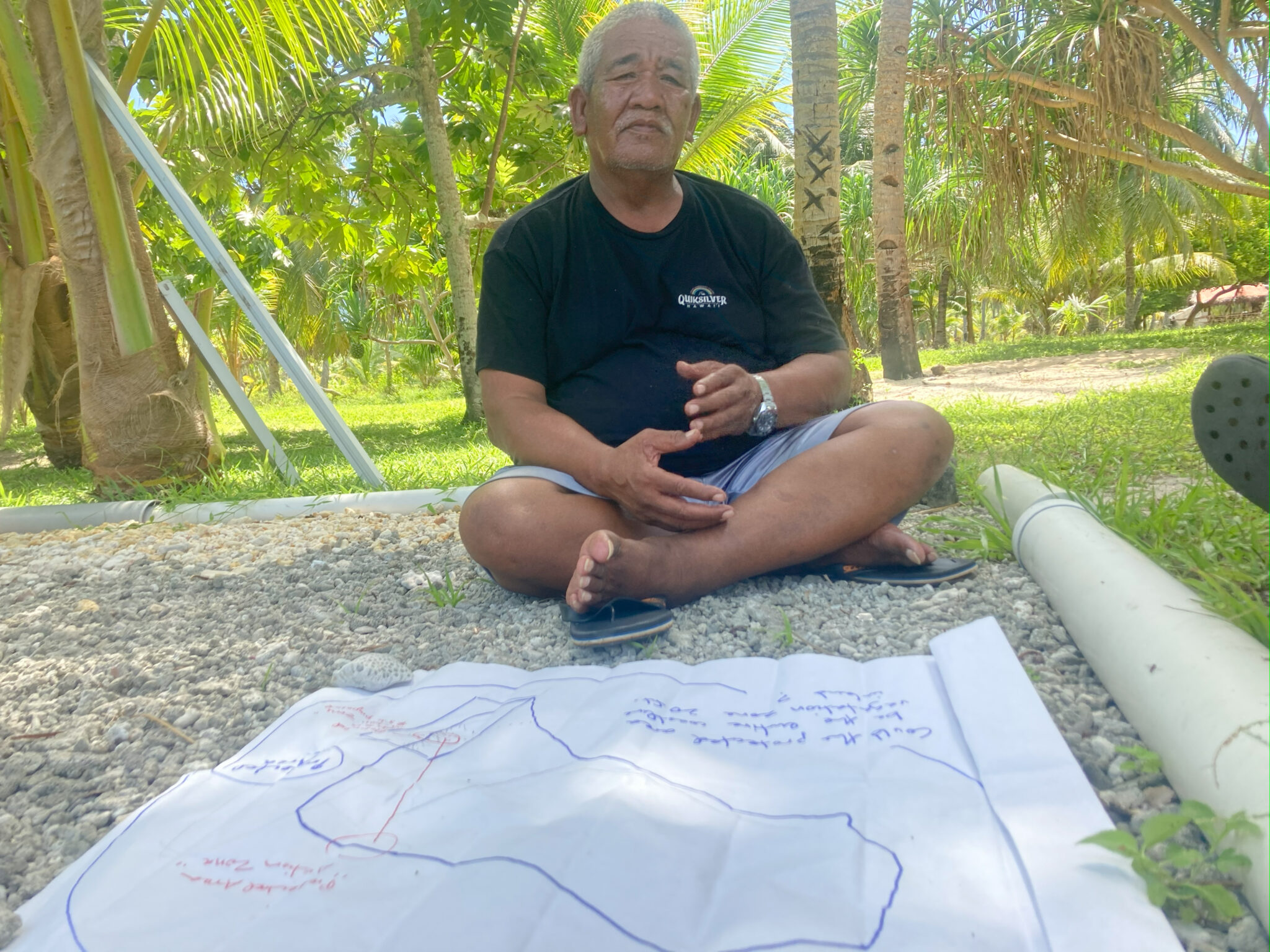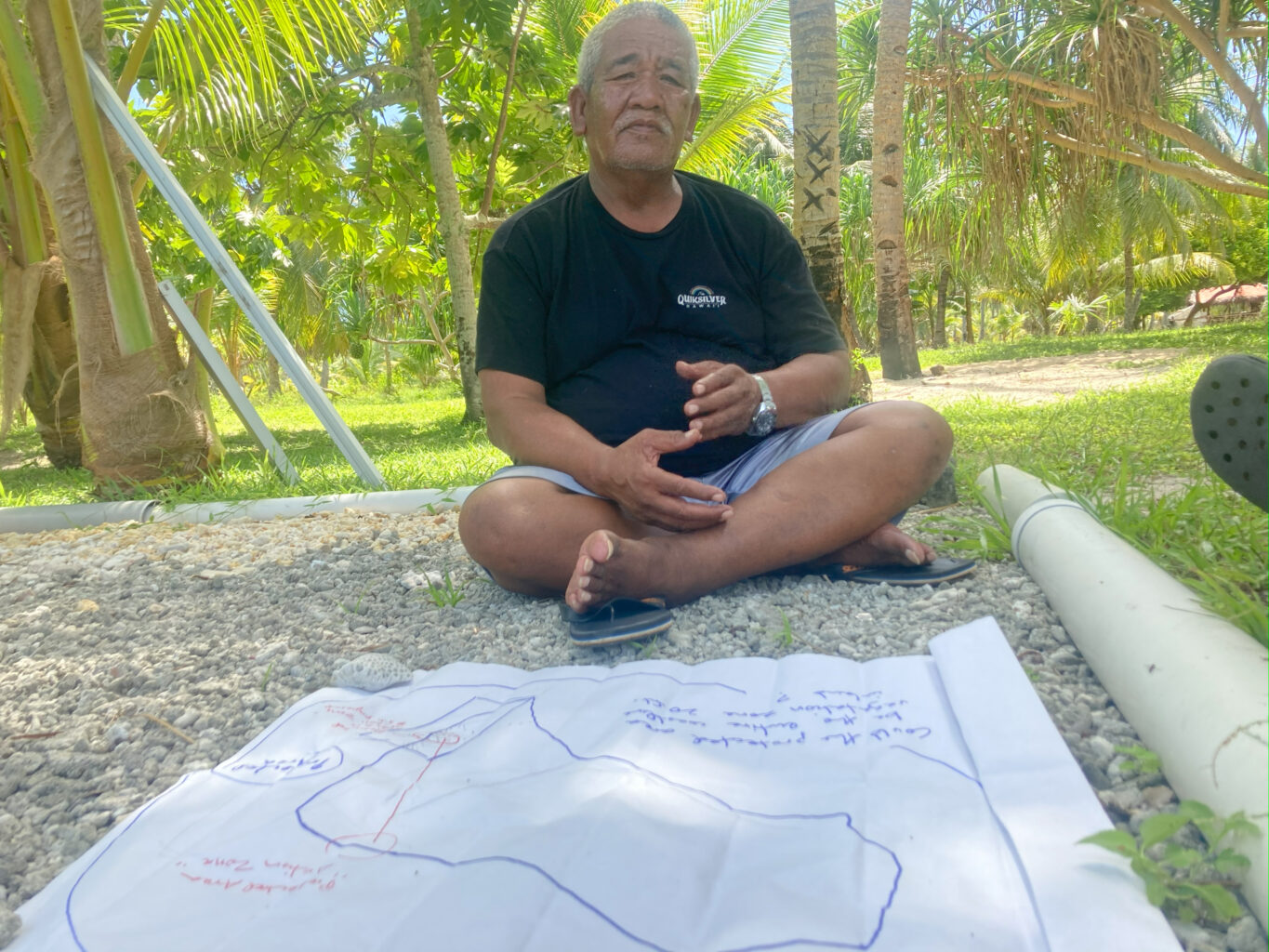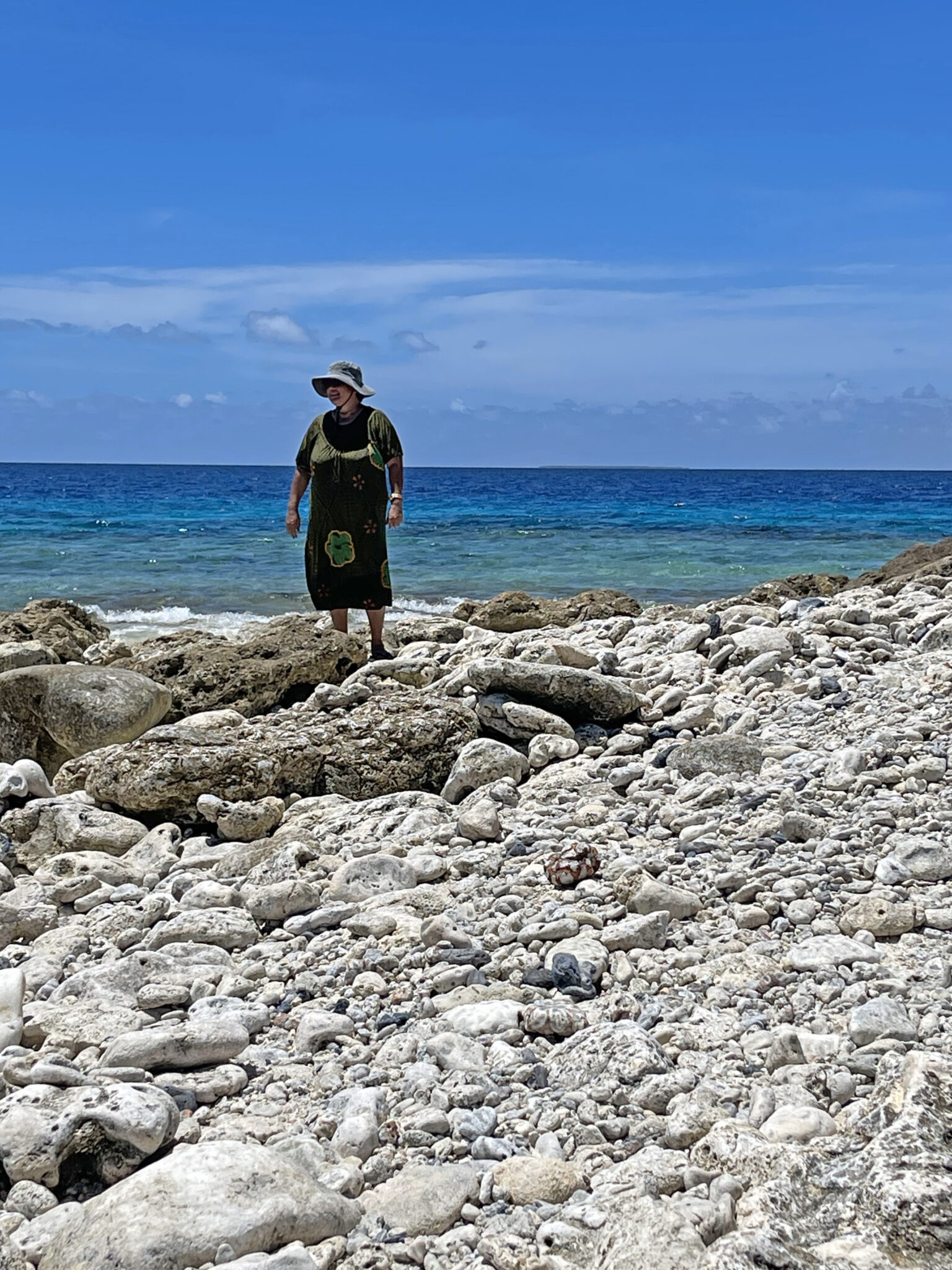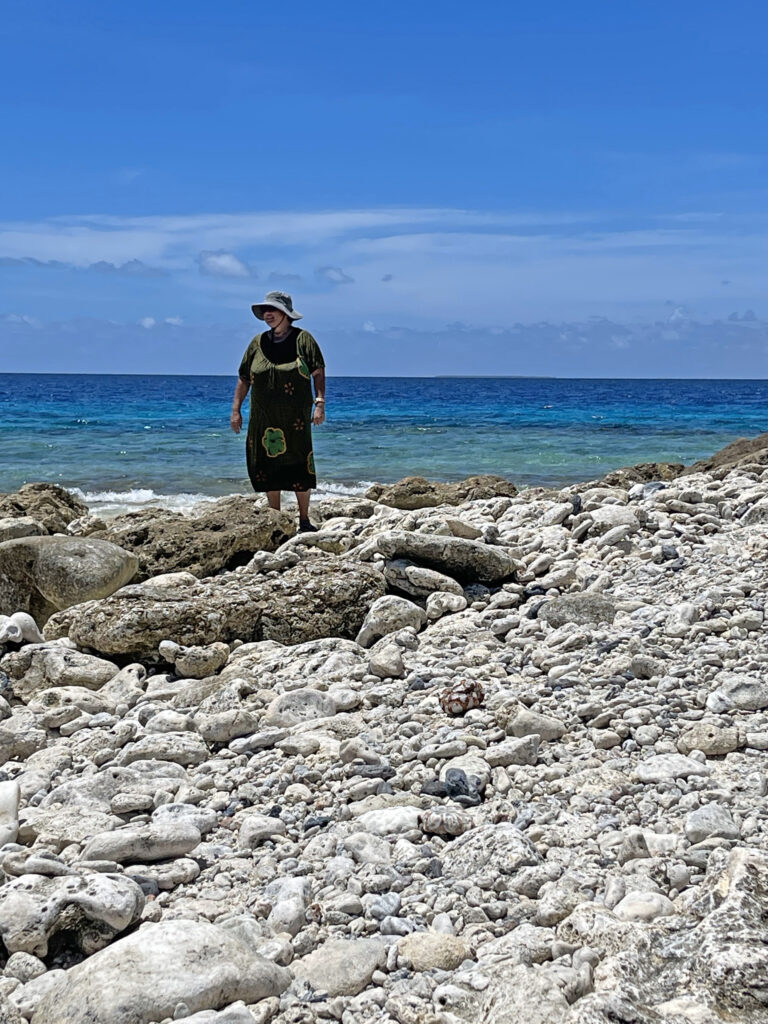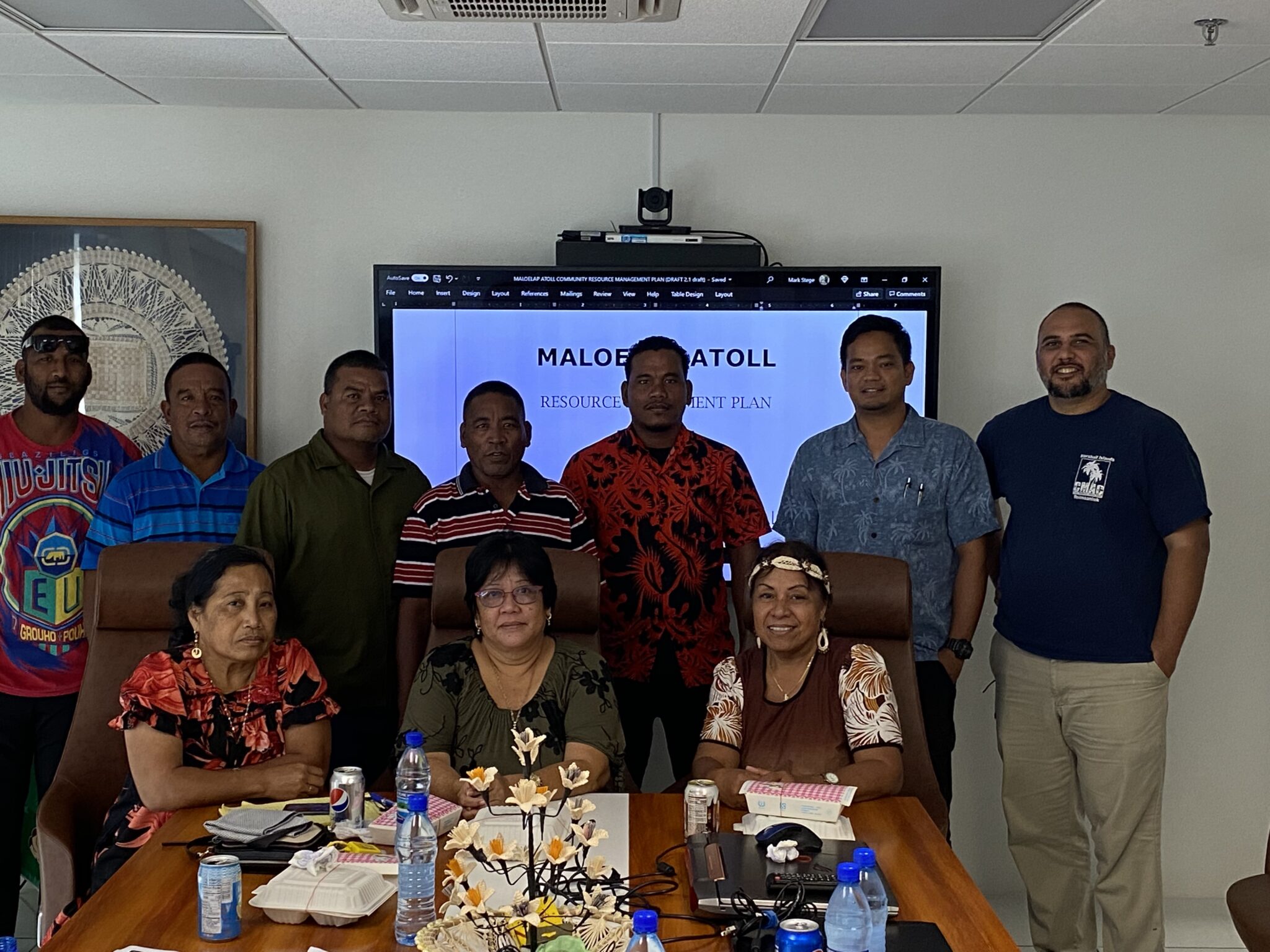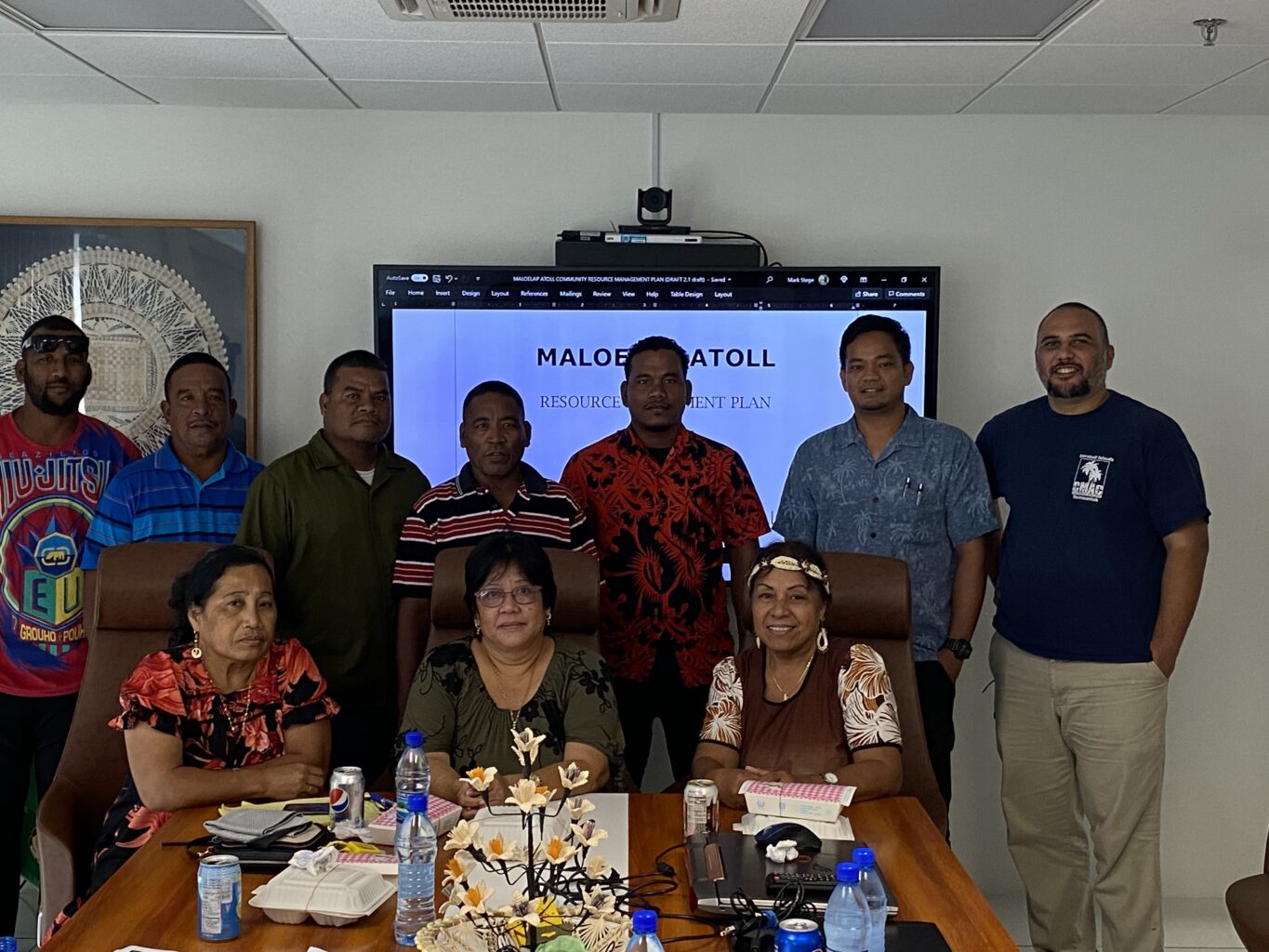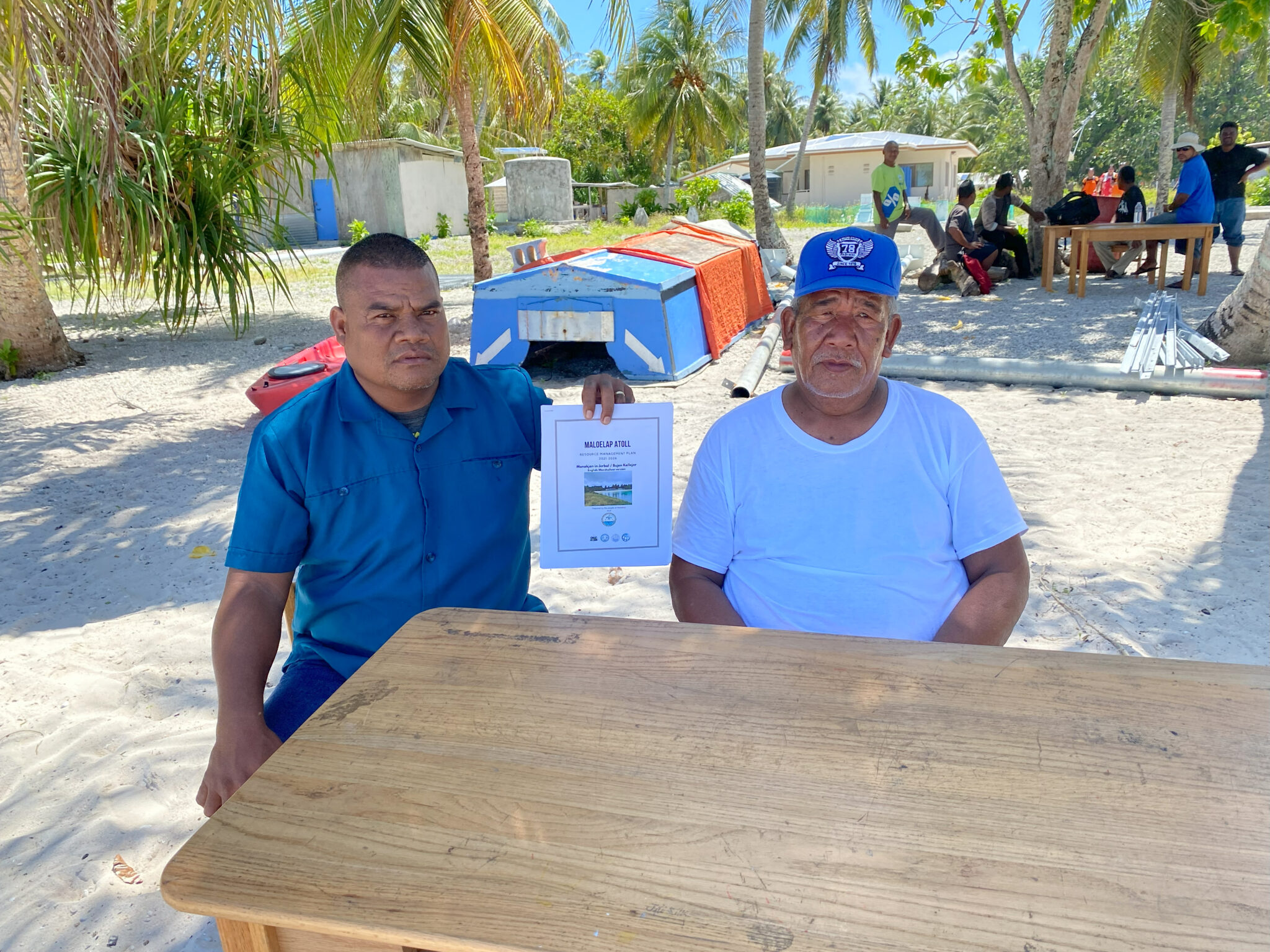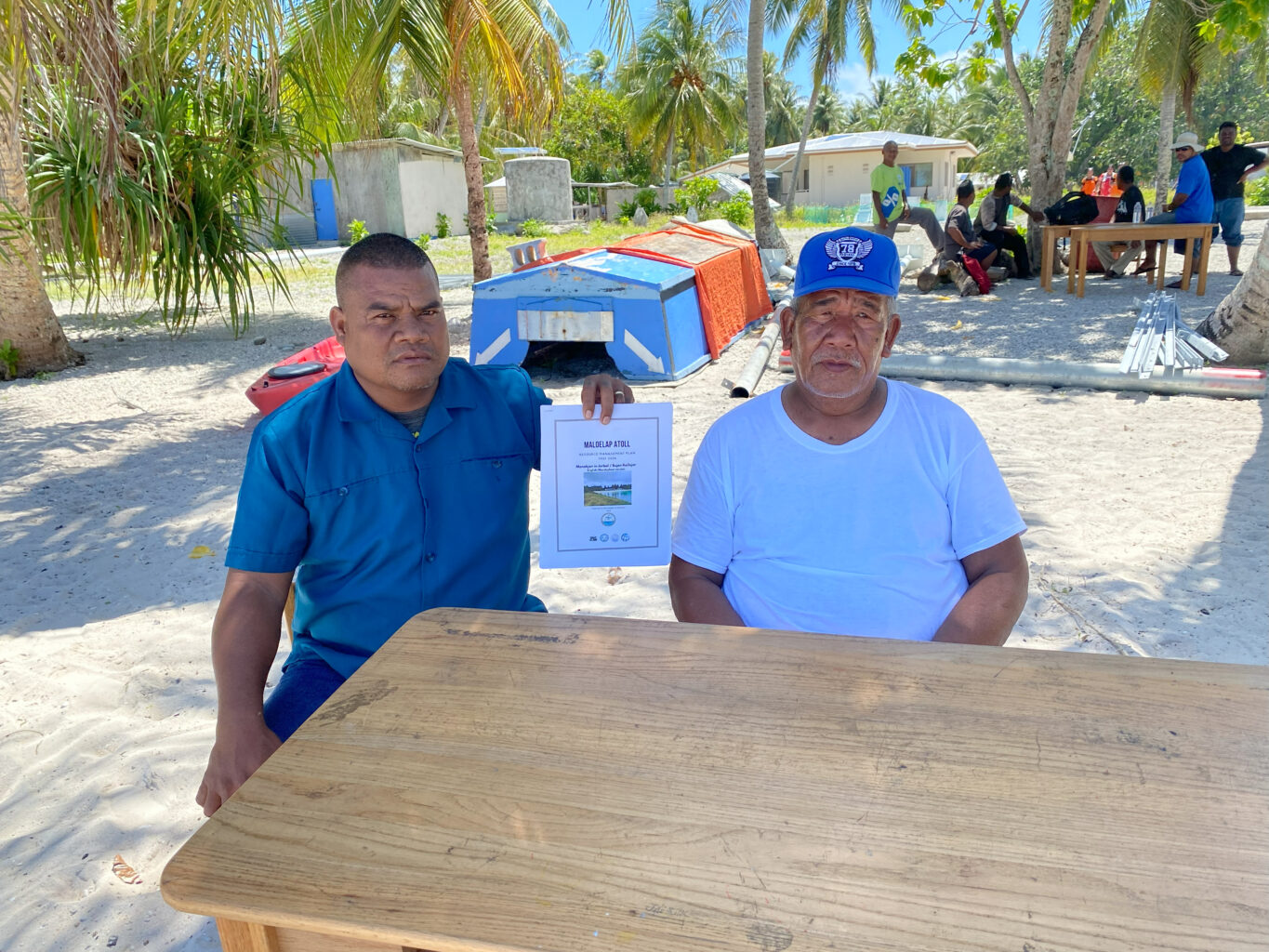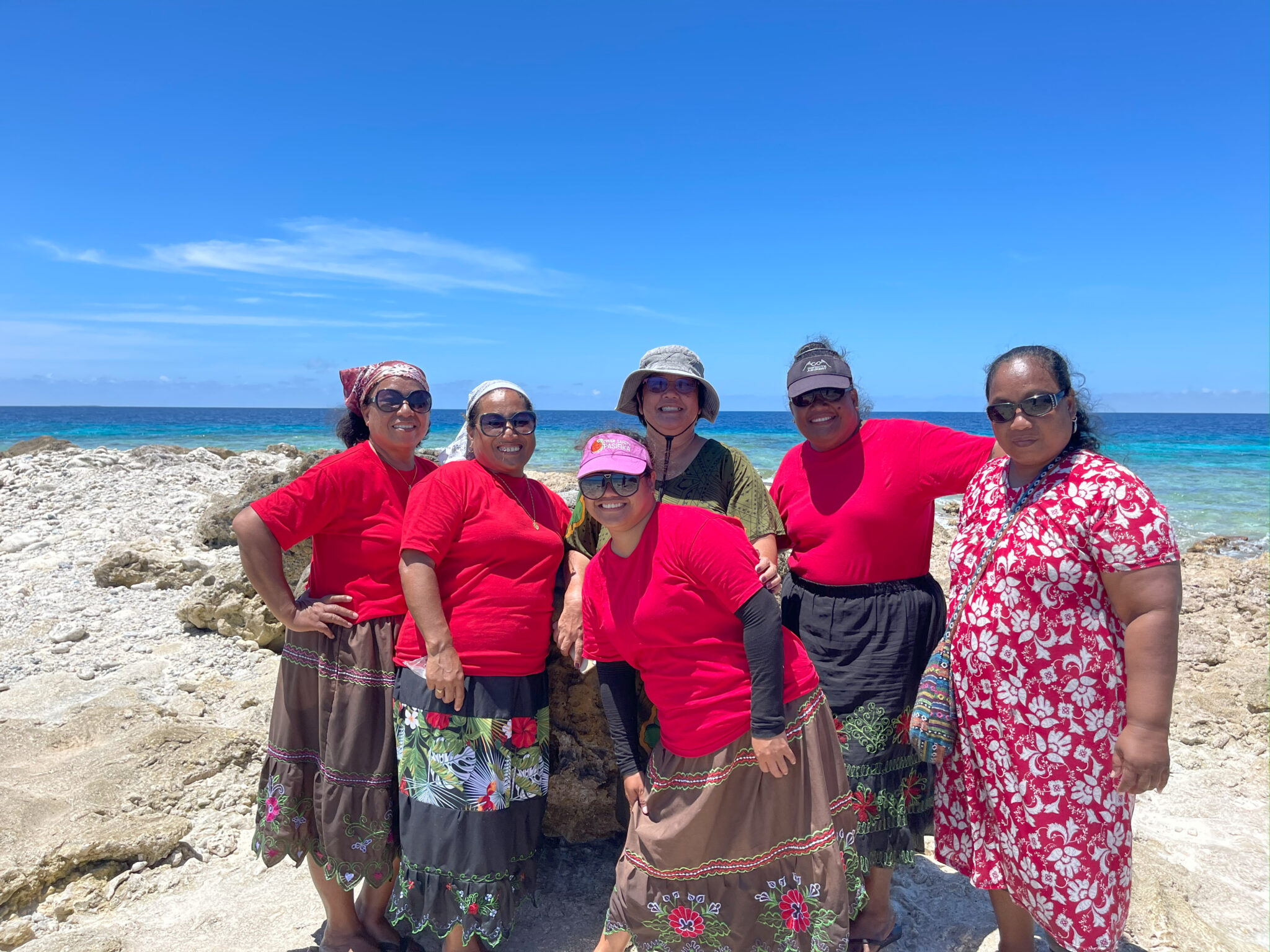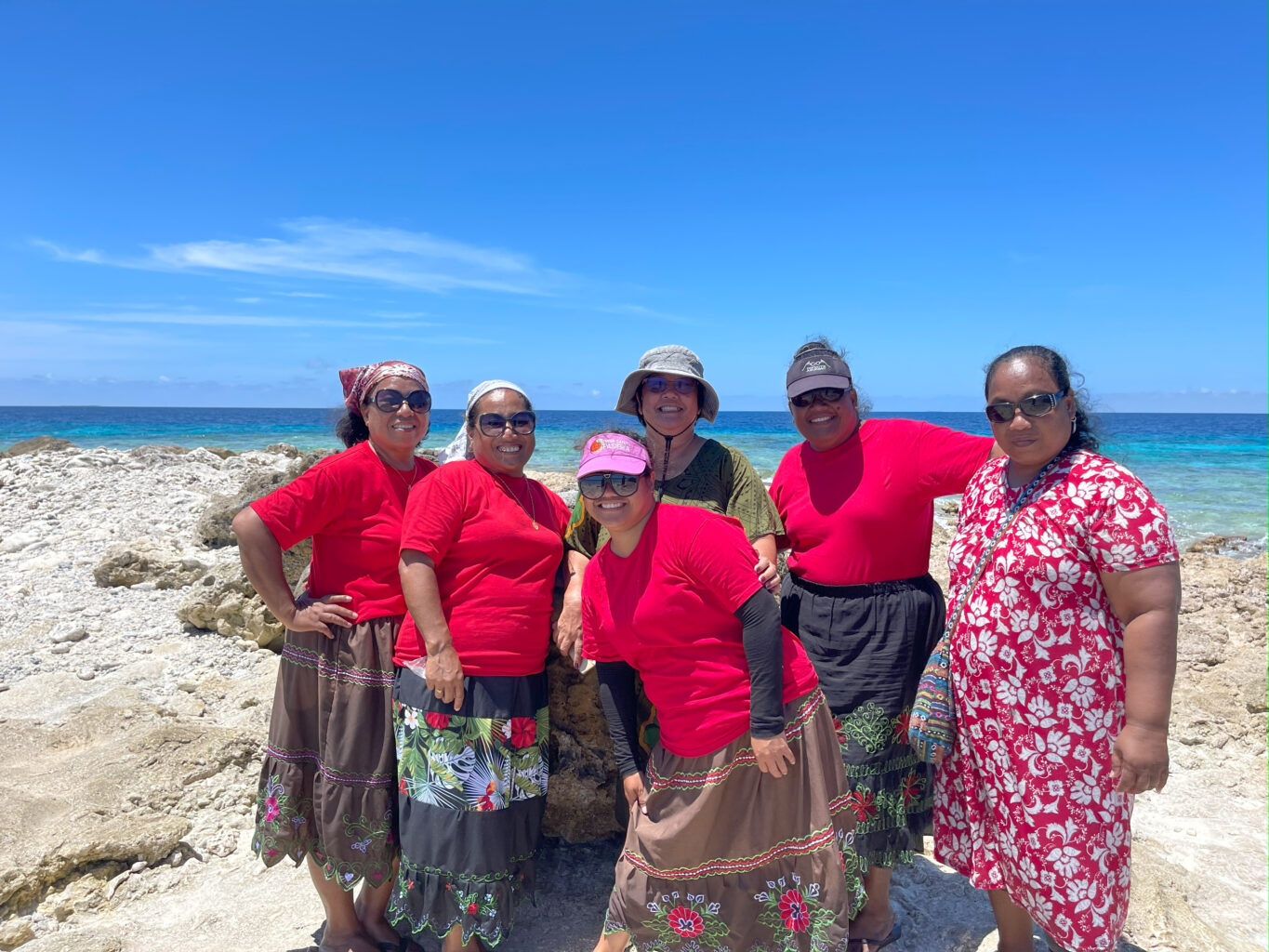Maloelap Atoll, the fourth largest by land area in the Marshall Islands, lies about 100 miles north of the main atoll of Majuro. Like many atolls that dot the mid-Pacific, it is home to communities steeped in tradition. Its people have always been intimately connected to the ocean, and they still depend heavily on it for food and livelihoods. They are intensely interested in safeguarding their marine ecosystems.
Maloelap’s five villages have a total population of almost 700 people, who are taking concrete steps to prevent overfishing. They are legally protecting several areas in the atoll, including the Boujlap pinnacle, which rises from the lagoon floor to sea level. There, the community is creating a permanent no-take zone of almost 2,500 acres.
The Boujlap area warrants this strict protection because fish, including snappers and groupers, aggregate there at certain times of the year for spawning. The area is also home to gray reef, blacktip, and whitetip sharks; three species of giant clams, and endangered green and hawksbill marine turtles. The huge concentrations of fish entice fishers who sometimes employ harmful practices, such as nighttime spear fishing, and take unsustainable numbers of fish. Turtles have also been overharvested there.
The community’s traditional leaders are strongly in favor of this increased protection, and their rulings carry considerable weight. Community members will conduct outreach in the atoll’s villages, stressing the importance of the no-take rules to the long-term health of the ocean and to the livelihoods of the people. They will also patrol the area regularly during spawning periods.
The villages will use a Seacology grant to build a small structure at the local landing strip, which is far from the main settlement. This will give them a safe place to store cargo between flights, which are infrequent.


